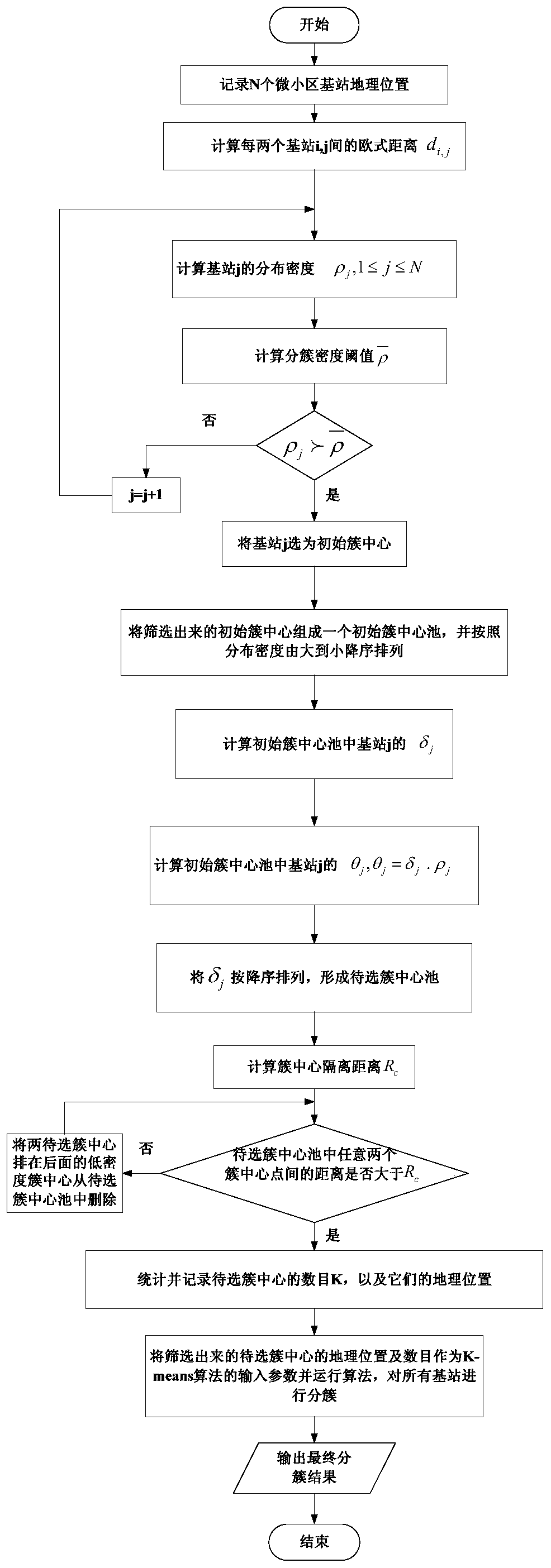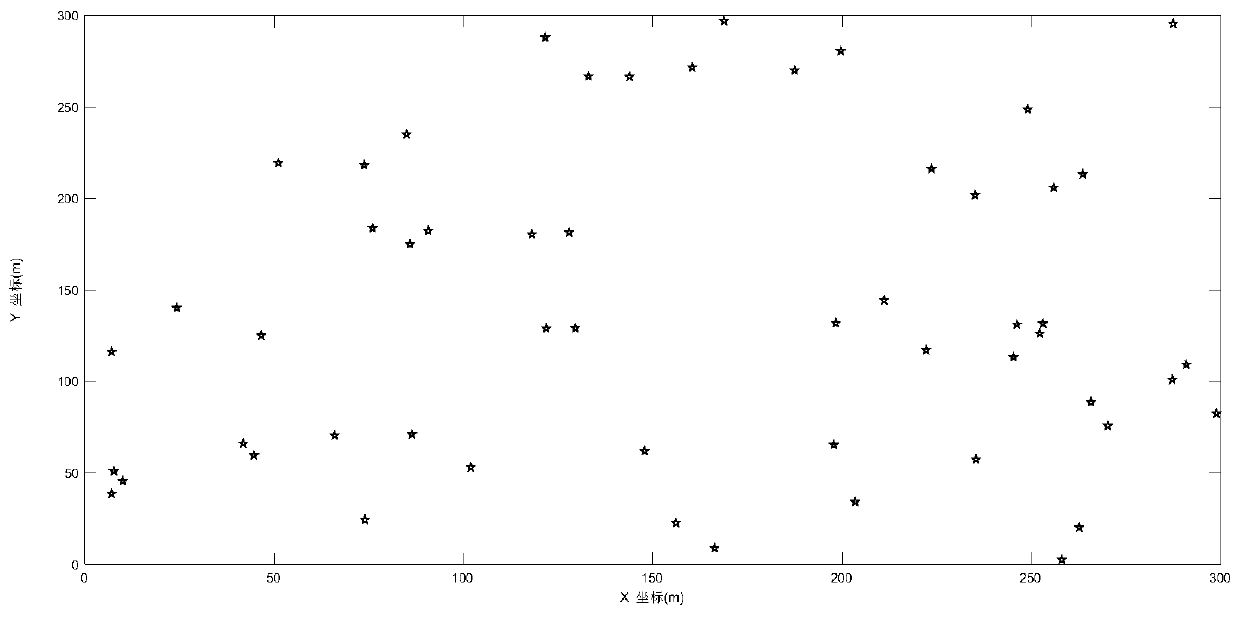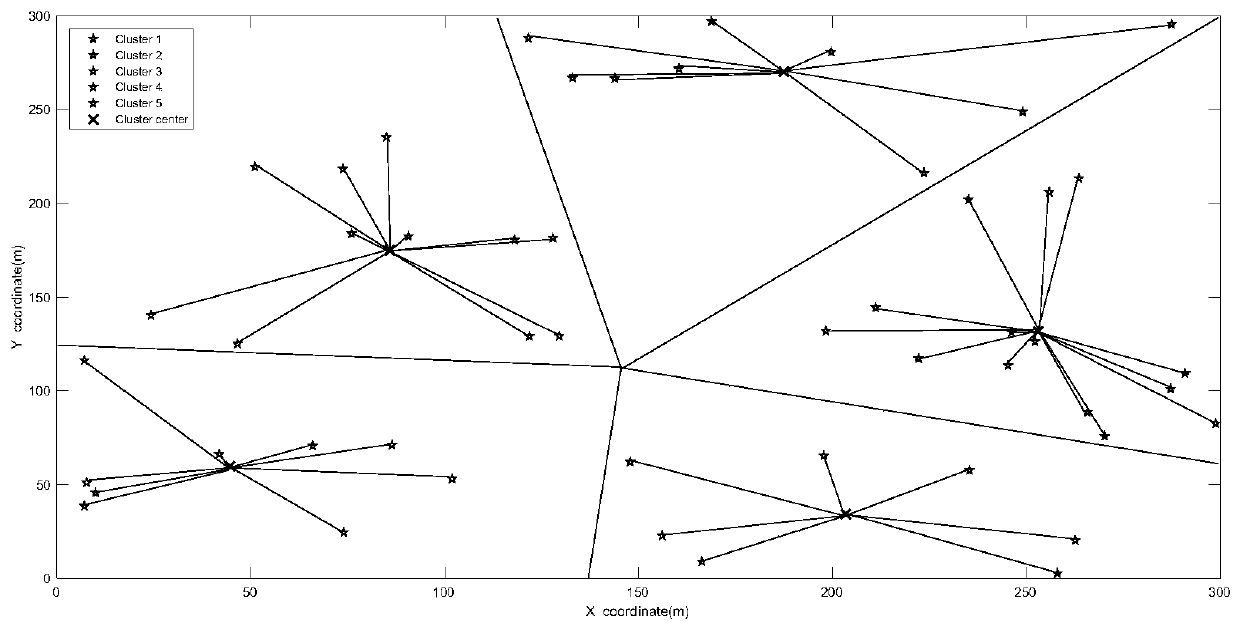A base station clustering method based on density and minimum distance in an ultra-dense network
An ultra-dense network and base station clustering technology, which is applied in the field of base station clustering based on density and minimum distance, can solve problems such as uneven clustering results
- Summary
- Abstract
- Description
- Claims
- Application Information
AI Technical Summary
Problems solved by technology
Method used
Image
Examples
Embodiment Construction
[0026] In order to enable those skilled in the art to better understand the solutions of the present invention, the technical solutions in the embodiments of the present invention will be clearly and completely described below in conjunction with the drawings in the embodiments of the present invention.
[0027] In the embodiment of the present invention, a base station clustering method based on density and minimum distance in an ultra-dense network is provided; specifically, the present invention uses an area of 300m*300m to simulate the distribution position of microcell base stations to simulate the method of the present invention It shows that the location distribution of all microcell base stations in the area satisfies the independent Poisson point distribution process; refer to figure 1 , assuming that the number of small cell base stations in the area is N=50, the specific process of the method includes steps:
[0028] Step 1. Record the geographic locations of N mi...
PUM
 Login to View More
Login to View More Abstract
Description
Claims
Application Information
 Login to View More
Login to View More - R&D
- Intellectual Property
- Life Sciences
- Materials
- Tech Scout
- Unparalleled Data Quality
- Higher Quality Content
- 60% Fewer Hallucinations
Browse by: Latest US Patents, China's latest patents, Technical Efficacy Thesaurus, Application Domain, Technology Topic, Popular Technical Reports.
© 2025 PatSnap. All rights reserved.Legal|Privacy policy|Modern Slavery Act Transparency Statement|Sitemap|About US| Contact US: help@patsnap.com



